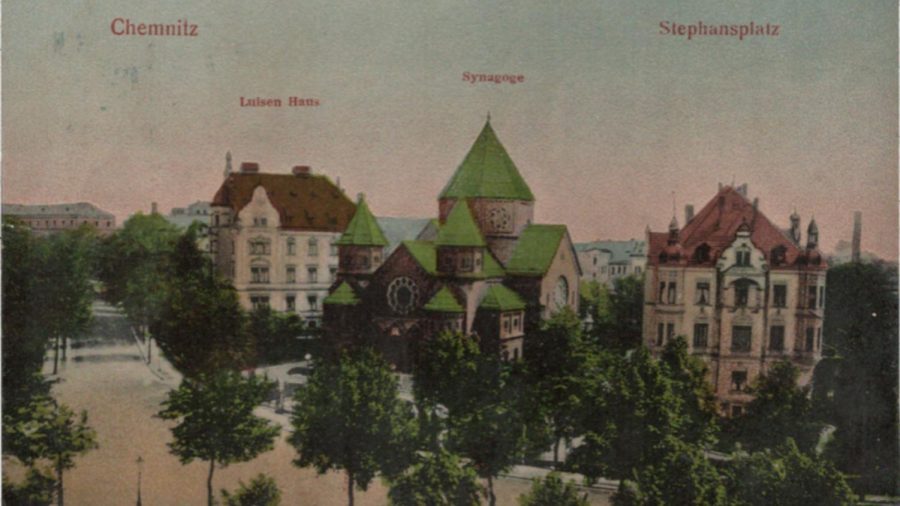Postcards keeping memories of old German synagogues alive in new e-book
“Chemnitz. Luisen Haus. Synagogue. Stephansplatz. Verlag u. Photographie Edm. Papezik. Posted on 14 April 1908, 13.8 x 8.7 cm. The Luisen Haus was a prestigious private clinic.” Excerpt From 24 German Synagogues This material may be protected by copyright.
Published June 19, 2023
More than a century before the first emails and texts were sent electronically, postcards were a very popular way of communicating. The first postcards became available with the advancement of photography, and the years between 1890 and 1915 are considered the postcard’s “Golden Age.”
Postcards were a quick way of staying connected, requiring the writer to use just a few words opposite a picture or drawing, which provided a visual impact for the receiver and a connection that was cherished. Now, more than a century later, those postcards offer unique glimpses at a world that in many cases no longer exists.
In 2021, “Jews in Old Postcards and Prints,” a collection of vintage postcards and antique prints was released. The book shed a thoughtful light on the history of Jews in Europe and around the Mediterranean and invited readers to reflect on the ways in which both Jews and non-Jews used postcards and prints to portray Jews, their communities, culture and institutions.
ADVERTISEMENT
The book was celebrated for showing the vibrancy and diversity of Jewish life and culture in Europe, a world largely extinguished by the Holocaust.
“Putting it together involved an endless succession of painful choices. For every image used at least one other image had to be excluded. The companion volumes we are planning will hopefully offer readers who want to know more about Jewish life in specific regions access to additional material,” said author Lars Fischer.
Now, the first of those companion volumes is ready.

The first e-book in the new series “Jews in Old Postcards and Prints compact: 24 German Synagogues” is available now.
ADVERTISEMENT
Along with the most important information about their history, this volume presents images of two dozen synagogues built mostly, but not exclusively, in major German cities before rise of Nazism and the Holocaust. The locations covered are: Bechhofen, Berlin, Bruchsal, Chemnitz, Dortmund, Dortmund-Hörde, Düsseldorf, Essen, Frankfurt/Main, Hamburg, Heidingsfeld, Heilbronn, Lübeck, Munich, Nuremberg, Pforzheim, Plauen, Stuttgart and Worms.
While the exterior of the Old Synagogue in Essen is now one of the most frequently used visual symbols of Jewish life in Germany, few are aware of just how spectacular its intricately composed and carefully crafted interior design originally was. Designed by the local non-Jewish architect Edmund Körner, it was inaugurated on 25 September 1913 and described by many at the time as the most beautiful synagogue in Germany. Desecrated, vandalized and set alight during the November Pogrom of 1938, the building proved too sturdy for easy demolition and survived. It stood empty until 1959, when the municipality stripped out all remaining traces of its original purpose and refurbished the building as an industrial design museum. Since 1980, the Old Synagogue has served as a museum and memorial and, more recently, as a Jewish cultural centre.
“This is obviously not the first book with pictures of German synagogues prior to the November Pogrom of 1938. Far from it,” said Fisher. Yet few, if any, offer a basic and accessible introduction to a small sample not just from one location or region but from across present-day Germany—from Hamburg to Munich and Bruchsal to Berlin—in quite the way this first volume in our new compact series does.”
The e-books will be available worldwide through Amazon for $3.99 per copy.


















